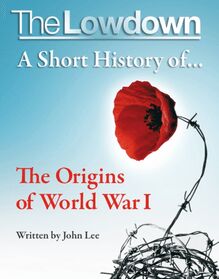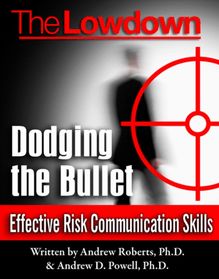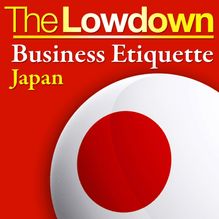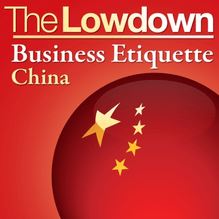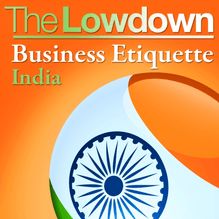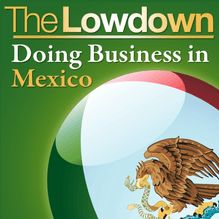-
 Univers
Univers
-
 Ebooks
Ebooks
-
 Livres audio
Livres audio
-
 Presse
Presse
-
 Podcasts
Podcasts
-
 BD
BD
-
 Documents
Documents
-
- Cours
- Révisions
- Ressources pédagogiques
- Sciences de l’éducation
- Manuels scolaires
- Langues
- Travaux de classe
- Annales de BEP
- Etudes supérieures
- Maternelle et primaire
- Fiches de lecture
- Orientation scolaire
- Méthodologie
- Corrigés de devoir
- Annales d’examens et concours
- Annales du bac
- Annales du brevet
- Rapports de stage
La lecture à portée de main
Vous pourrez modifier la taille du texte de cet ouvrage
Découvre YouScribe en t'inscrivant gratuitement
Je m'inscrisDécouvre YouScribe en t'inscrivant gratuitement
Je m'inscrisEn savoir plus
Vous pourrez modifier la taille du texte de cet ouvrage
En savoir plus

Description
Informations
| Publié par | Creative Content |
| Date de parution | 12 avril 2009 |
| Nombre de lectures | 0 |
| EAN13 | 9781906790295 |
| Langue | English |
Informations légales : prix de location à la page 0,0150€. Cette information est donnée uniquement à titre indicatif conformément à la législation en vigueur.
Extrait
THE LOWDOWN: TOP TIPS FOR WANNABE CEOS
by Richard Charkin
with questions suggested by Richard Pettinger
THE LOWDOWN: TOP TIPS FOR WANNABE CEOS
First published in 2009 By Creative Content Ltd, Roxburghe House, Roxburghe House ,273-287 Regent Street, London, W1B 2HA. Copyright © 2009 Creative Content Ltd
The moral right of Richard Charkin and Richard Pettinger to be identified as the authors of this work has been asserted by them in accordance with the Copyright, Designs and Patents Act, 1988.
All rights reserved. No part of this publication may be reproduced or transmitted in any form by any means, electronic or mechanical, including photocopying, recording or any information storage and retrieval system, without prior permission in writing from the publisher nor be otherwise circulated in any form or binding or cover other than that in which it is published.
Typesetting by CPI Rowe Cover Design by Daniel at HCT Design
ISBN 978-1-906790-29-5
www.creativecontentdigital.com
TABLE OF CONTENTS
INTRODUCTION
PART 1: WHAT A CEO IS AND WHAT A CEO DOES
PART 2: BUILDING THE FOUNDATIONS: GETTING STARTED ON THE CAREER LADDER
PART 3: GAME PLANS
PART 4: CLIMBING THE LADDER
PART 5: GETTING TO THE VERY TOP
PART 6: STAY THERE!
PART 7: MOVING ON/EXIT STRATEGIES
PART 8: AND FINALLY...
PART 9: A BONUS!
INTRODUCTION
Welcome to "Top Tips for Wannabe CEOs" – a guide for those who want to keep ahead of the game as they make their way up the career ladder to the very top.
Here are some of the things we’re going to talk about: First we’ll be defining what a CEO is and discussing the rewards and responsibilities of the top job. We’ll take you through a typical day for a publishing CEO.
Then we’ll talk about building foundations and getting started on the career ladder, including education and training. We’ll move on to climbing that ladder and discuss what pitfalls to avoid as you advance, touching on allies and enemies, strategies and office politics. We’ll make some suggestions for getting to the very top – and give you pointers on staying there. We’ll recap with some key "dos and don’ts" and finally – as a bonus – we’ll be answering a few questions posed by people at the very top of their professions – such as best-selling author Jeffrey Archer and Chief Executive of the British Library, Lynne Brindley.
Let’s get started.
PART 1 – What a CEO is and what a CEO does
Q:
First things first. What exactly is a CEO? What do they do?
CEO: Chief Executive Officer has different meanings in different companies and in different industries. In my view, the unifying theme is that a CEO is the person who’s ultimately responsible to the shareholders to manage the investment that they made in the company. The role itself will be defined to some extent by the size of the company, its geographical location, the nature of its workforce and its customer base. For instance, the CEO of Microsoft is probably very different from the CEO of The Royal Shakespeare Company. However, each of them is responsible to investors, to customers, to employees, to suppliers and to business intermediaries.
Q:
What does a CEO in publishing do, besides answering to the stakeholders?
Well, in order to answer to the stakeholders you have to run a decent business. A decent business is one which fulfils its obligations to all involved with it. In publishing, this means authors, illustrators, designers, employees, distributors, printers, readers and shareholders. Getting the balance right is not easy, but it is the board’s job to help the CEO find that balance. So running a decent business in publishing – or I suspect in anything – is a matter of working with a board and helping it run efficiently.
In many businesses, there are two boards. There’s a governing board (which includes non-executive directors) and the CEO is a servant to that board. Then there’s the executive board. The CEO is the leader of that board and the CEO’s job is to ensure that there is the right structure to do whatever needs doing, that there are the right people in the right jobs in that structure, that those people are properly motivated and indeed rewarded – for success, not failure, and definitely not for mediocrity.
Part of the CEO’s role is to help identify strategy for the company. For example: Are we going to become global, or shall we return to our domestic roots? Shall we move into new technologies or stick to the knitting?
Q:
Meaning?
In other words, stick to what we know. Shall we go upmarket? Shall we go mass market? Shall we start completely new businesses, or adjacent ones?
The CEO is also responsible for business growth. Growth itself is not always essential and indeed its pursuit has frequently led to disaster. However, standing still is rarely a successful strategy in business and a static or declining business is unlikely to attract the best management. Growth might come from acquiring other companies, or it might come from developing new organic growth points. Both routes to growth will certainly cost the business money.
Q:
Can you explain what you mean by "organic growth points?"
I’ll give you an example. At Bloomsbury we decided to build an academic publishing business and we have made a couple of acquisitions – Berg Publishing and the Arden Shakespeare – but perhaps as importantly, we’ve set up a business called "Bloomsbury Academic," which is going to be a brand new shiny sparkly publisher, starting from scratch, starting from nothing. We’re hiring editors and we’re going to create a business with a unique business model in order to serve authors, students and teachers.
So getting back to what a CEO does: there are two other specific areas for which the CEO is responsible. One is the company’s brand. Not in all, but in many businesses, the brand is central to the success of the business. For instance, Rolls Royce or Monsanto or Glaxo – their brands are crucial not only for their customers, but also for the investment community. A CEO has to ensure that the brand is maintained and that it is strengthened and not diluted by usage.
The second area is the spirit of the company. It should be a company that people want to work for, that they are proud of and which they can comfortably discuss with friends and family. The CEO has a significant degree of responsibility for creating a culture that establishes and nurtures that spirit.
Q:
Take us through a typical day.
I get in pretty early – normally about. 7.30 – and I try to clear the stuff that’s come in overnight from the USA. Typically emails.
It seems to me that one of the jobs of any manager is not to be an obstruction to the making of decisions by other people. So the last thing you want to do is be slow in responding to any question. It sounds obvious, but you’d be surprised how many people take days and days to respond. So, clearing my in-tray is absolutely the first priority in the morning.
Every day is different, but we have a weekly sales meeting when the company comes together and we let them know what’s worked and – infrequently – what hasn’t worked. It’s really a question of sharing information and trying to motivate people. After that there are usually meetings throughout the day or telephone conversations to attend to.
We have a weekly international publishing meeting where the editors from our US, German and UK companies sit round a virtual table and jointly make decisions. We are a global business. One of the challenges for business these days is moving from being a series of national or regional businesses into being a global business where appropriate.
For lunch, I would prefer to be in, but I’m frequently out at lunchtime meetings. These might be with overseas colleagues who help sell our books. It might be with literary agents, it might be with people from other publishing houses. It might be with retailers or wholesalers. Sometimes, because we’re a public company, with people associated with the City. Sometimes, regrettably, it’s with lawyers – which in our business, usually means we’re being sued for libel or something similar.
In the afternoon it just carries on.
Q:
Doing things like what?
Things like authorizing payments to authors, like establishing print numbers for new books and reprints, like negotiating special deals for the distribution of our titles, like consulting with designers and agreeing what jacket to put on a book.
And of course work often goes on into the evening. I’m out three or four nights a week at launch parties or other author events – that sort of thing. This may be peculiar to media businesses – it’s not necessarily something that other industries have to do.
And I travel a fair amount, because – again – we’re a global business. At various times in my career I’ve been away from home 100 nights a year or more.
Q:
What are the perks of being a CEO?
By and large you’re paid more than the people who work for you. That may not always be the case, but one hopes it is! And you get to meet all sorts of interesting people – that’s a perk.
Q:
And what are the responsibilities?
Responsibilities are absolute. They are never to let people down. Never to let your shareholders, your directors, your employees, down. We recently heard of an automobile manufacturer laying off thousands of people. Now I can completely understand this. You’ve got an economic environment and a downturn and these things are inevitable – but I think in some way the CEO of this company has failed. I think sacking people is a sign of failure. We’ve all done it – so we’ve all failed. But I think our responsibility to the people whom we employ is hugely important.
Q:
Is the top job the best one to have? Does it bring happiness?
No. The best job is whatever is the best job for the individual concerned. There is nothing worse than seeing someone who’s deeply unsuited to being a CEO – or unsuited to any job, really – and seeing th
-
 Univers
Univers
-
 Ebooks
Ebooks
-
 Livres audio
Livres audio
-
 Presse
Presse
-
 Podcasts
Podcasts
-
 BD
BD
-
 Documents
Documents
-
Jeunesse
-
Littérature
-
Ressources professionnelles
-
Santé et bien-être
-
Savoirs
-
Education
-
Loisirs et hobbies
-
Art, musique et cinéma
-
Actualité et débat de société
-
Jeunesse
-
Littérature
-
Ressources professionnelles
-
Santé et bien-être
-
Savoirs
-
Education
-
Loisirs et hobbies
-
Art, musique et cinéma
-
Actualité et débat de société
-
Actualités
-
Lifestyle
-
Presse jeunesse
-
Presse professionnelle
-
Pratique
-
Presse sportive
-
Presse internationale
-
Culture & Médias
-
Action et Aventures
-
Science-fiction et Fantasy
-
Société
-
Jeunesse
-
Littérature
-
Ressources professionnelles
-
Santé et bien-être
-
Savoirs
-
Education
-
Loisirs et hobbies
-
Art, musique et cinéma
-
Actualité et débat de société
- Cours
- Révisions
- Ressources pédagogiques
- Sciences de l’éducation
- Manuels scolaires
- Langues
- Travaux de classe
- Annales de BEP
- Etudes supérieures
- Maternelle et primaire
- Fiches de lecture
- Orientation scolaire
- Méthodologie
- Corrigés de devoir
- Annales d’examens et concours
- Annales du bac
- Annales du brevet
- Rapports de stage

